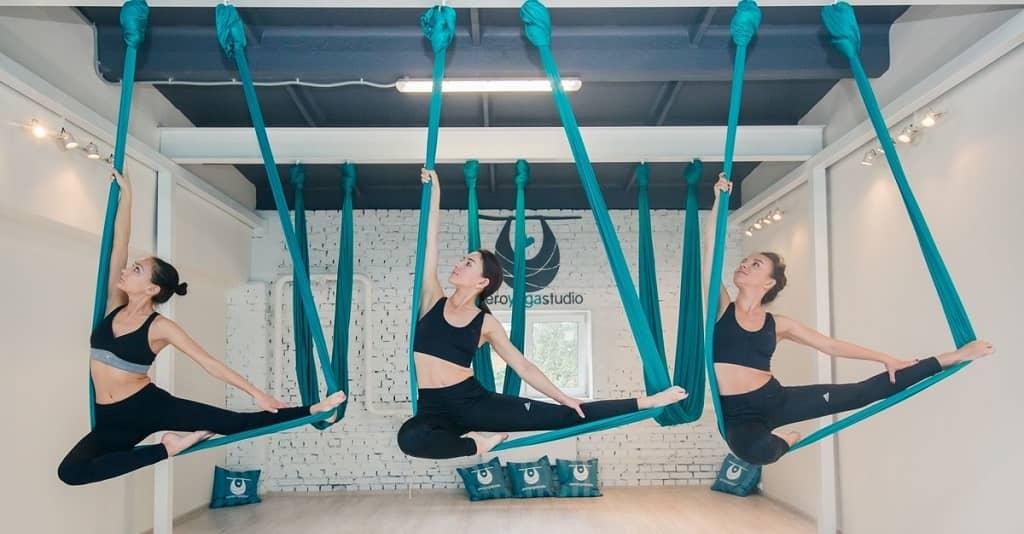Дата публикации: 05.03.2018
We are accustomed to understand by yoga a special practice, rooted deep in antiquity. Therefore, the futuristic word "aeroyoga" is often perceived as nonsense, striving, literally, to encroach on the sacred.
As a separate discipline, yoga on hammocks has really appeared recently, but this does not detract from its usefulness and deep connection with classical yoga.
Aeroyoga, air yoga, yoga in hammocks - all this is a free reading of the English word Unnata Aerial Yoga - a direction that has transferred the practice of traditional yoga to a meter above the floor. The uniqueness of the technique is that a special hammock, made of high-strength fabric, partially or completely takes over the weight of the body during the execution of the asanas.
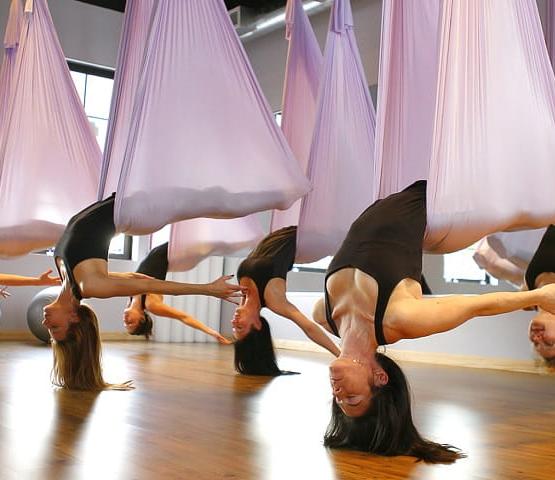
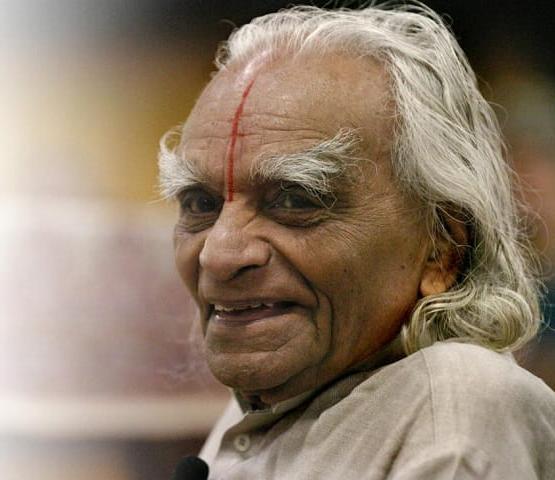
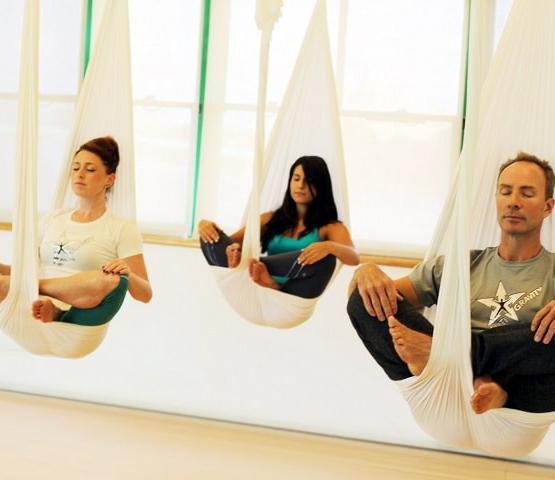
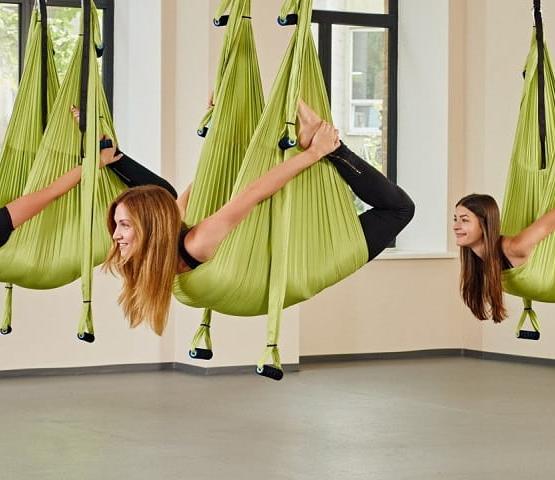
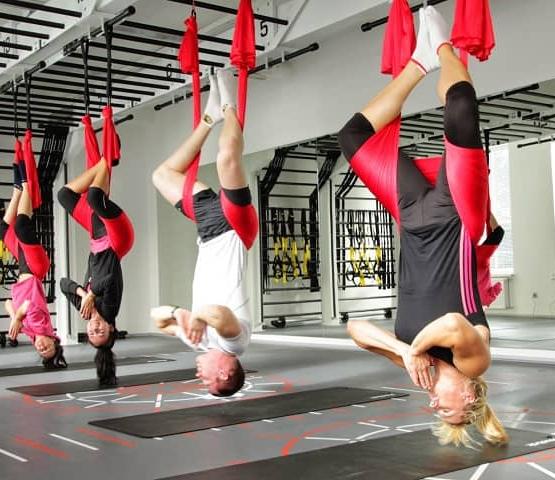
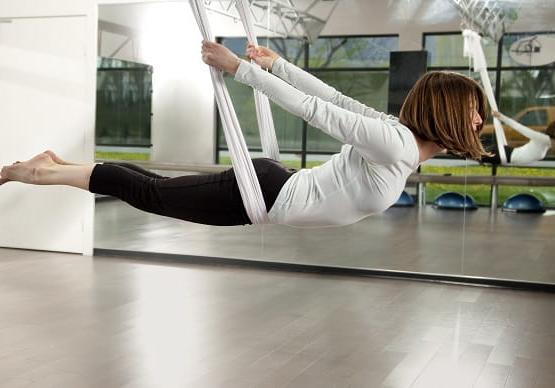
A special hammock takes over the weight of the body during the execution of the asanas, photo WEB
Do you think this is like aerial acrobatics? You are mistaken! Such training, on the contrary, is in many ways easier than yoga on the rug and is suitable even to those who have never engaged in it in life.
But first things first. Contrary to the belief that aero-yoga is a fashion trend, practitioners call it the natural evolution of ordinary yoga. For example, one of the most outstanding masters, the master Iyengar for many years used so-called rope walls to facilitate the execution of asanas and to "level out" the wrong postures of his disciples.
Master Iyengar is one of the most outstanding masters, photo WEB
Perhaps this experience inspired Michel Dortignac, who founded Unnata Aerial Yoga 12 years ago. This "floating" practice allows you to fully experience the beauty of yoga, combining mind, body and breathing. However, most of us understand by yoga only an interesting set of physical exercises, which generally have a beneficial effect on the body. And this is certainly true.
From a purely practical, down-to-earth point of view, exercises in the hammock allow you to stretch the spine, improve body flexibility, relax all muscles and nervous system, and increase the range of movements. This is simply vital for those who spend a third of the day on sedentary work!
Exercises in the hammock allow you to stretch the spine, photo WEB
For beginners, such activities will help balance the activities of organs and systems, improve posture, develop coordination and flexibility, and gain invaluable experience in properly performing basic asanas. Experienced practitioners will be able to make more complete deflections in the hammock, perfect complicated and inverted asanas, and also find deeper nuances of performing poses and reveal their mistakes.
Professionals say that aero-yoga for beginners is more effective than traditional activities on the rugs. It is easier to master the upside down asanas and it is easier to perform most poses, thanks to reducing the load on the problem areas. Such training is just a panacea for people who experience pain in the cervical, thoracic and lumbar spine.
In aero-yoga it is easier to master the upside down asanas and to perform most of the poses, photo WEB
Nevertheless, to master the air asanas for the first time it is necessary to proceed cautiously, under the guidance of an experienced (!) instructor and after consulting a doctor. If you have problems with the spine, at first it is better to take two or three individual lessons, on which the coach will understand what is possible, and what can not be done for you.
It is also worthwhile for pregrant ladies, because aero-yoga in itself is not absolutely contraindicated in pregnancy. On the contrary, under the strict guidance of an individual trainer, such practice will most effectively prepare the body for the forthcoming birth, lactation and subsequent physical exertion.
It is better to master the air asanas for the first time under the guidance of an experienced instructor, photo WEB
If you decide to practice air yoga, be fully prepared from the first lesson, so that will bring as much benefit as possible and will not cause disappointment. Choose the appropriate clothes. Leggings with the addition of latex material are preferable to shorts and any trousers, as they glide over the hammock fabric, do not "roll" in the most unexpected places and provide complete freedom of movement.
On top it is better to wear a T-shirt or rashgard with a long sleeve or at least a ¾ length - so you will protect yourself from the pain caused by the pressure of the hammock. Over time, you will learn how to correctly distribute the weight of the body and the need for such "protection" will fall away. But you do not have to worry about shoes at all - it is most convenient to barefoot.
Choose comfortable clothes for practicing air yoga, photo WEB
Aero-yoga conquers more and more hearts all over the world, but has not become a mainstream yet. If there is a club in your city offering this practice, do not refuse to enjoy the pleasure of flying in reality. Yes, and with benefit to the body!
Victoria Romanova, Russia, Moscow
Here can be your advertising!
Articles
08.05.2017
Interesting facts about health
32 reasons to reconsider attitude to your health
23.02.2018
Down kilos!
How to lose weight properly and with health benefits
03.07.2019
Tan from A to Z
Everything you need to know about a healthy tan
Дата публикации: 05.03.2018
We are accustomed to understand by yoga a special practice, rooted deep in antiquity. Therefore, the futuristic word "aeroyoga" is often perceived as nonsense, striving, literally, to encroach on the sacred.
As a separate discipline, yoga on hammocks has really appeared recently, but this does not detract from its usefulness and deep connection with classical yoga.
Aeroyoga, air yoga, yoga in hammocks - all this is a free reading of the English word Unnata Aerial Yoga - a direction that has transferred the practice of traditional yoga to a meter above the floor. The uniqueness of the technique is that a special hammock, made of high-strength fabric, partially or completely takes over the weight of the body during the execution of the asanas.
A special hammock takes over the weight of the body during the execution of the asanas, photo WEB
Do you think this is like aerial acrobatics? You are mistaken! Such training, on the contrary, is in many ways easier than yoga on the rug and is suitable even to those who have never engaged in it in life.
But first things first. Contrary to the belief that aero-yoga is a fashion trend, practitioners call it the natural evolution of ordinary yoga. For example, one of the most outstanding masters, the master Iyengar for many years used so-called rope walls to facilitate the execution of asanas and to "level out" the wrong postures of his disciples.
Master Iyengar is one of the most outstanding masters, photo WEB
Perhaps this experience inspired Michel Dortignac, who founded Unnata Aerial Yoga 12 years ago. This "floating" practice allows you to fully experience the beauty of yoga, combining mind, body and breathing. However, most of us understand by yoga only an interesting set of physical exercises, which generally have a beneficial effect on the body. And this is certainly true.
From a purely practical, down-to-earth point of view, exercises in the hammock allow you to stretch the spine, improve body flexibility, relax all muscles and nervous system, and increase the range of movements. This is simply vital for those who spend a third of the day on sedentary work!
Exercises in the hammock allow you to stretch the spine, photo WEB
For beginners, such activities will help balance the activities of organs and systems, improve posture, develop coordination and flexibility, and gain invaluable experience in properly performing basic asanas. Experienced practitioners will be able to make more complete deflections in the hammock, perfect complicated and inverted asanas, and also find deeper nuances of performing poses and reveal their mistakes.
Professionals say that aero-yoga for beginners is more effective than traditional activities on the rugs. It is easier to master the upside down asanas and it is easier to perform most poses, thanks to reducing the load on the problem areas. Such training is just a panacea for people who experience pain in the cervical, thoracic and lumbar spine.
In aero-yoga it is easier to master the upside down asanas and to perform most of the poses, photo WEB
Nevertheless, to master the air asanas for the first time it is necessary to proceed cautiously, under the guidance of an experienced (!) instructor and after consulting a doctor. If you have problems with the spine, at first it is better to take two or three individual lessons, on which the coach will understand what is possible, and what can not be done for you.
It is also worthwhile for pregrant ladies, because aero-yoga in itself is not absolutely contraindicated in pregnancy. On the contrary, under the strict guidance of an individual trainer, such practice will most effectively prepare the body for the forthcoming birth, lactation and subsequent physical exertion.
It is better to master the air asanas for the first time under the guidance of an experienced instructor, photo WEB
If you decide to practice air yoga, be fully prepared from the first lesson, so that will bring as much benefit as possible and will not cause disappointment. Choose the appropriate clothes. Leggings with the addition of latex material are preferable to shorts and any trousers, as they glide over the hammock fabric, do not "roll" in the most unexpected places and provide complete freedom of movement.
On top it is better to wear a T-shirt or rashgard with a long sleeve or at least a ¾ length - so you will protect yourself from the pain caused by the pressure of the hammock. Over time, you will learn how to correctly distribute the weight of the body and the need for such "protection" will fall away. But you do not have to worry about shoes at all - it is most convenient to barefoot.
Choose comfortable clothes for practicing air yoga, photo WEB
Aero-yoga conquers more and more hearts all over the world, but has not become a mainstream yet. If there is a club in your city offering this practice, do not refuse to enjoy the pleasure of flying in reality. Yes, and with benefit to the body!
Victoria Romanova, Russia, Moscow
Here can be your advertising!
Articles
08.05.2017
Interesting facts about health
32 reasons to reconsider attitude to your health
23.02.2018
Down kilos!
How to lose weight properly and with health benefits
03.07.2019
Tan from A to Z
Everything you need to know about a healthy tan
Дата публикации: 05.03.2018
We are accustomed to understand by yoga a special practice, rooted deep in antiquity. Therefore, the futuristic word "aeroyoga" is often perceived as nonsense, striving, literally, to encroach on the sacred.
As a separate discipline, yoga on hammocks has really appeared recently, but this does not detract from its usefulness and deep connection with classical yoga.
Aeroyoga, air yoga, yoga in hammocks - all this is a free reading of the English word Unnata Aerial Yoga - a direction that has transferred the practice of traditional yoga to a meter above the floor. The uniqueness of the technique is that a special hammock, made of high-strength fabric, partially or completely takes over the weight of the body during the execution of the asanas.
A special hammock takes over the weight of the body during the execution of the asanas, photo WEB
Do you think this is like aerial acrobatics? You are mistaken! Such training, on the contrary, is in many ways easier than yoga on the rug and is suitable even to those who have never engaged in it in life.
But first things first. Contrary to the belief that aero-yoga is a fashion trend, practitioners call it the natural evolution of ordinary yoga. For example, one of the most outstanding masters, the master Iyengar for many years used so-called rope walls to facilitate the execution of asanas and to "level out" the wrong postures of his disciples.
Master Iyengar is one of the most outstanding masters, photo WEB
Perhaps this experience inspired Michel Dortignac, who founded Unnata Aerial Yoga 12 years ago. This "floating" practice allows you to fully experience the beauty of yoga, combining mind, body and breathing. However, most of us understand by yoga only an interesting set of physical exercises, which generally have a beneficial effect on the body. And this is certainly true.
From a purely practical, down-to-earth point of view, exercises in the hammock allow you to stretch the spine, improve body flexibility, relax all muscles and nervous system, and increase the range of movements. This is simply vital for those who spend a third of the day on sedentary work!
Exercises in the hammock allow you to stretch the spine, photo WEB
For beginners, such activities will help balance the activities of organs and systems, improve posture, develop coordination and flexibility, and gain invaluable experience in properly performing basic asanas. Experienced practitioners will be able to make more complete deflections in the hammock, perfect complicated and inverted asanas, and also find deeper nuances of performing poses and reveal their mistakes.
Professionals say that aero-yoga for beginners is more effective than traditional activities on the rugs. It is easier to master the upside down asanas and it is easier to perform most poses, thanks to reducing the load on the problem areas. Such training is just a panacea for people who experience pain in the cervical, thoracic and lumbar spine.
In aero-yoga it is easier to master the upside down asanas and to perform most of the poses, photo WEB
Nevertheless, to master the air asanas for the first time it is necessary to proceed cautiously, under the guidance of an experienced (!) instructor and after consulting a doctor. If you have problems with the spine, at first it is better to take two or three individual lessons, on which the coach will understand what is possible, and what can not be done for you.
It is also worthwhile for pregrant ladies, because aero-yoga in itself is not absolutely contraindicated in pregnancy. On the contrary, under the strict guidance of an individual trainer, such practice will most effectively prepare the body for the forthcoming birth, lactation and subsequent physical exertion.
It is better to master the air asanas for the first time under the guidance of an experienced instructor, photo WEB
If you decide to practice air yoga, be fully prepared from the first lesson, so that will bring as much benefit as possible and will not cause disappointment. Choose the appropriate clothes. Leggings with the addition of latex material are preferable to shorts and any trousers, as they glide over the hammock fabric, do not "roll" in the most unexpected places and provide complete freedom of movement.
On top it is better to wear a T-shirt or rashgard with a long sleeve or at least a ¾ length - so you will protect yourself from the pain caused by the pressure of the hammock. Over time, you will learn how to correctly distribute the weight of the body and the need for such "protection" will fall away. But you do not have to worry about shoes at all - it is most convenient to barefoot.
Choose comfortable clothes for practicing air yoga, photo WEB
Aero-yoga conquers more and more hearts all over the world, but has not become a mainstream yet. If there is a club in your city offering this practice, do not refuse to enjoy the pleasure of flying in reality. Yes, and with benefit to the body!
Victoria Romanova, Russia, Moscow
Here can be your advertising!
Articles
08.05.2017
Interesting facts about health
32 reasons to reconsider attitude to your health
23.02.2018
Down kilos!
How to lose weight properly and with health benefits
03.07.2019
Tan from A to Z
Everything you need to know about a healthy tan
